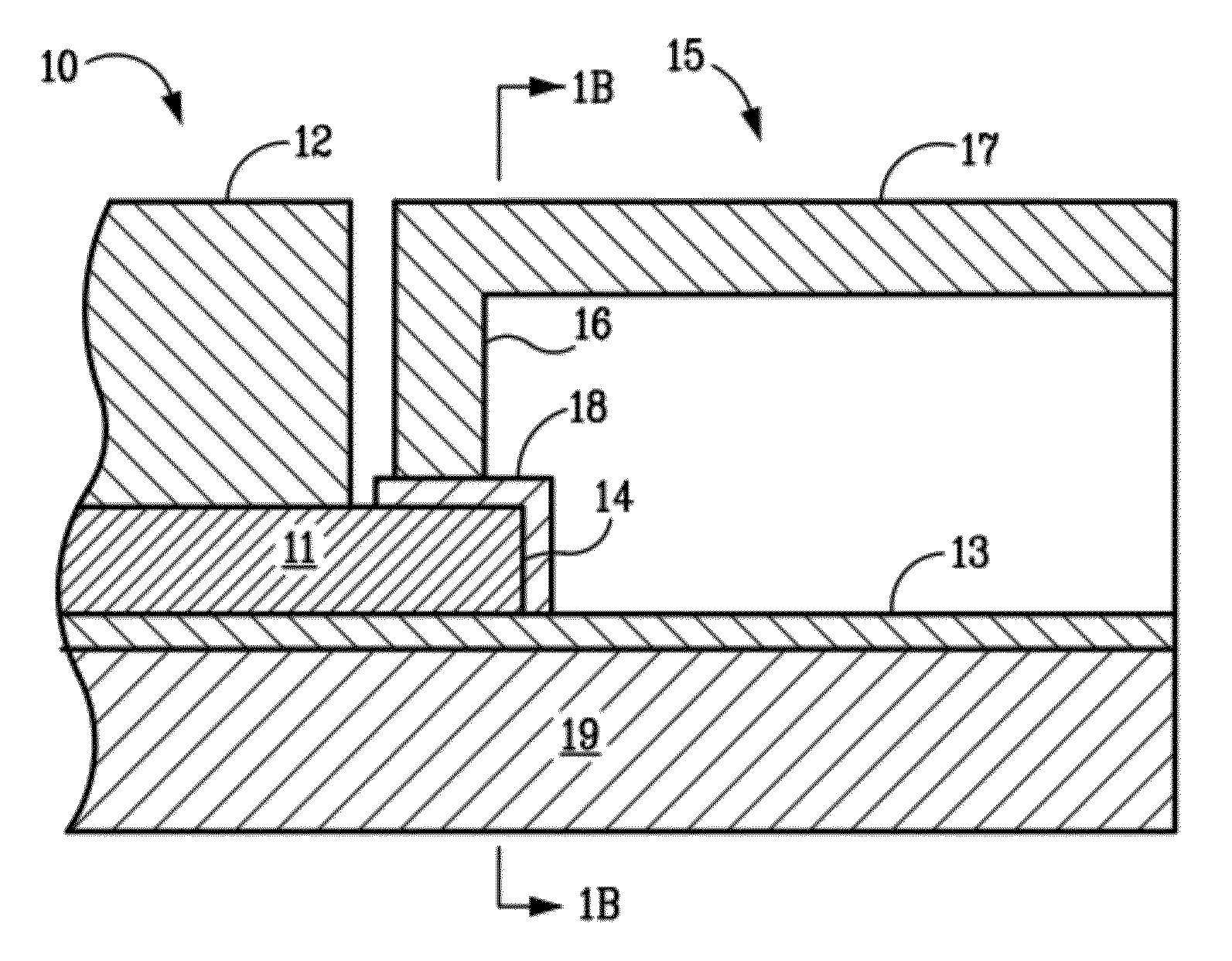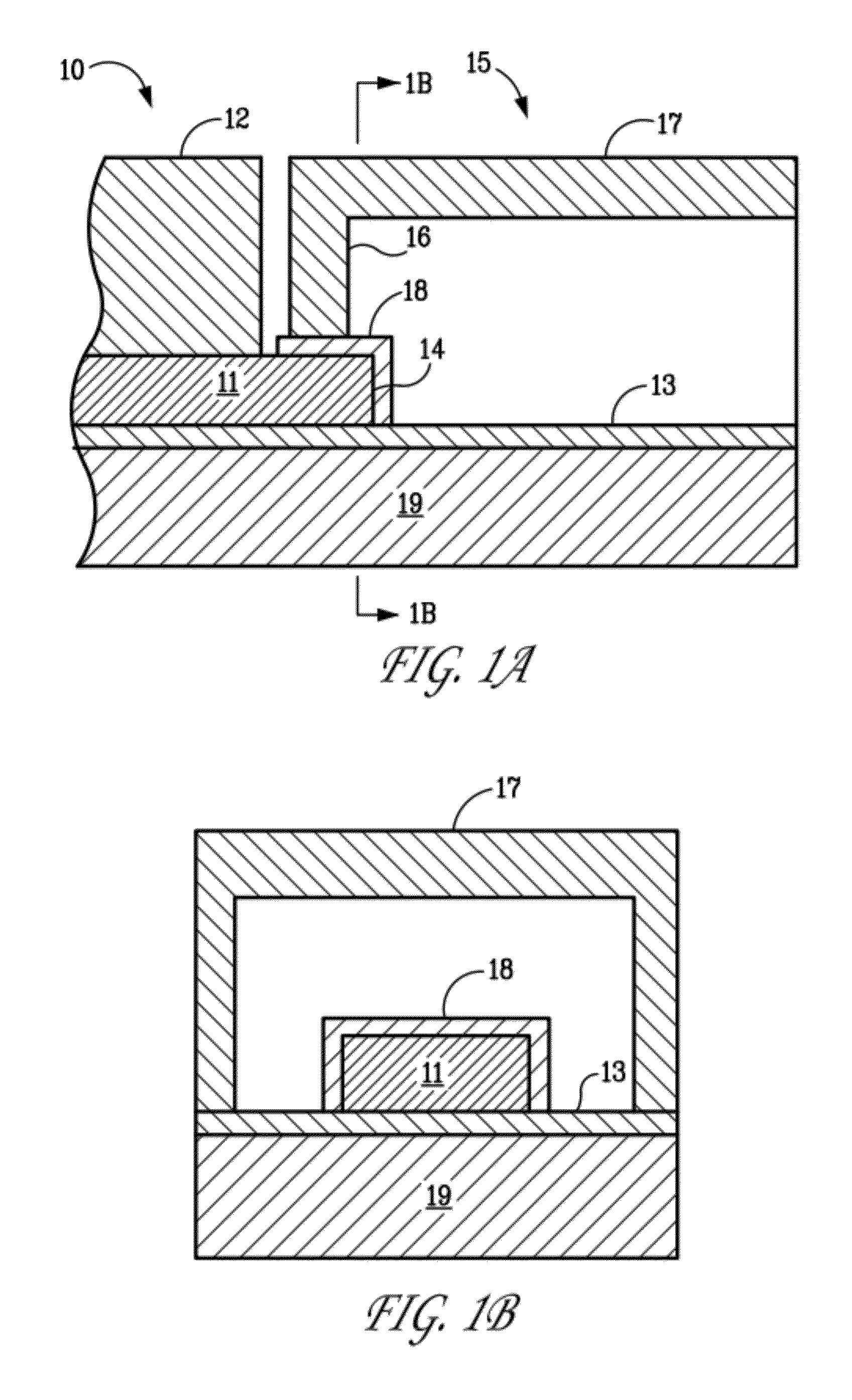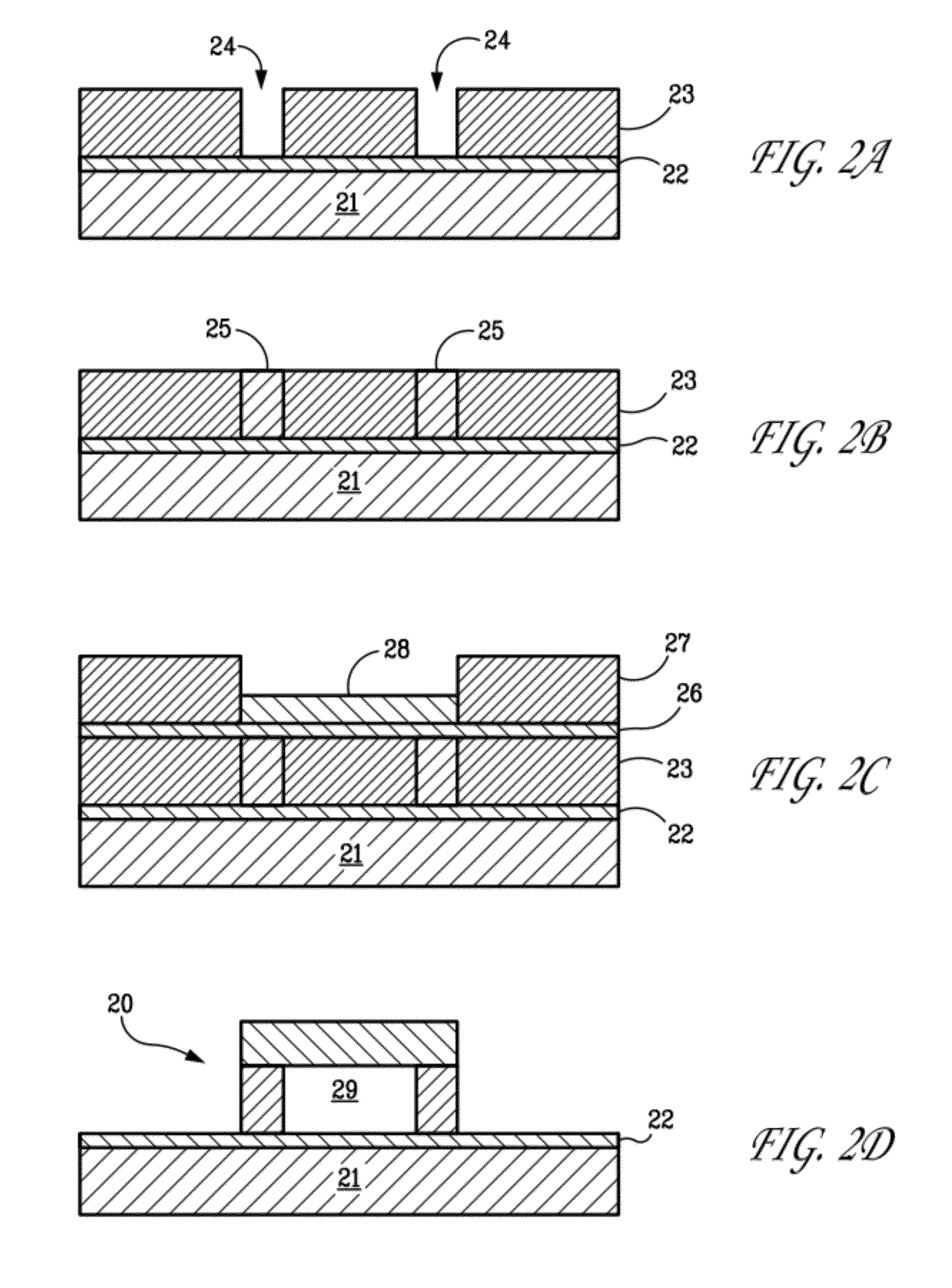Integration of a terahertz quantum cascade laser with a hollow waveguide
a quantum cascade laser and hollow waveguide technology, applied in the field of terahertz (thz) technologies, can solve the problems of poor coupling to external coherent detectors, complex phase structures, and many challenges to the implementation of qcls as practical thz sources, and achieve the effects of improving the efficiency low loss, and optimizing the output power of quantum cascade lasers
- Summary
- Abstract
- Description
- Claims
- Application Information
AI Technical Summary
Benefits of technology
Problems solved by technology
Method used
Image
Examples
Embodiment Construction
[0030]The present invention is directed to the integration of a QCL with a hollow waveguide to improve the laser beam pattern with a manufacturable method. For example, by coupling the QCL output into a single-mode rectangular waveguide (RWG) the radiation mode structure will be known and the propagation, manipulation, and broadcast of the QCL radiation can then be entirely controlled by well-established RWG techniques. Further, many existing mixers are already embedded in RWG blocks. By integrating a QCL into a compatible block, the QCLs can be mated more quickly with this existing technology and infrastructure, thereby providing a more compact and robust system than using quasi-optics. Integrating QCLs into RWGs also enables complete on-chip THz circuits.
[0031]Because typical QCL frequencies are greater than 1 THz, the dimensions of single-mode rectangular waveguide at these wavelengths are on the order of tens of microns. While such small THz waveguides can be made by traditional...
PUM
 Login to View More
Login to View More Abstract
Description
Claims
Application Information
 Login to View More
Login to View More - R&D
- Intellectual Property
- Life Sciences
- Materials
- Tech Scout
- Unparalleled Data Quality
- Higher Quality Content
- 60% Fewer Hallucinations
Browse by: Latest US Patents, China's latest patents, Technical Efficacy Thesaurus, Application Domain, Technology Topic, Popular Technical Reports.
© 2025 PatSnap. All rights reserved.Legal|Privacy policy|Modern Slavery Act Transparency Statement|Sitemap|About US| Contact US: help@patsnap.com



